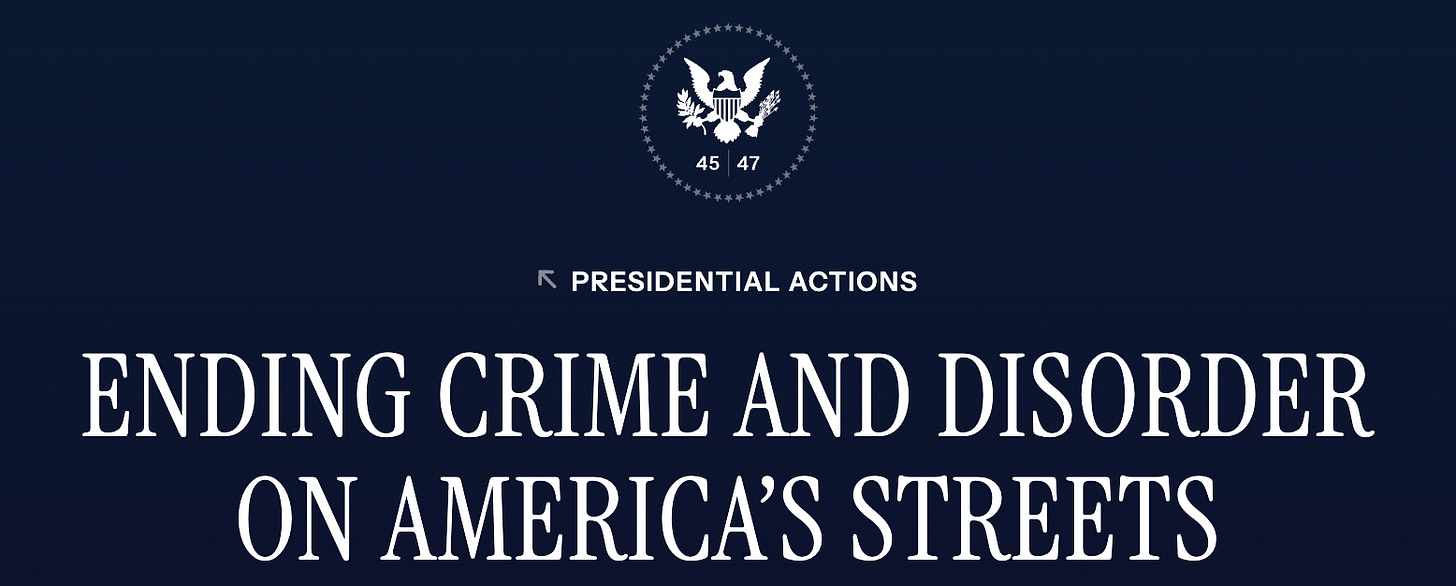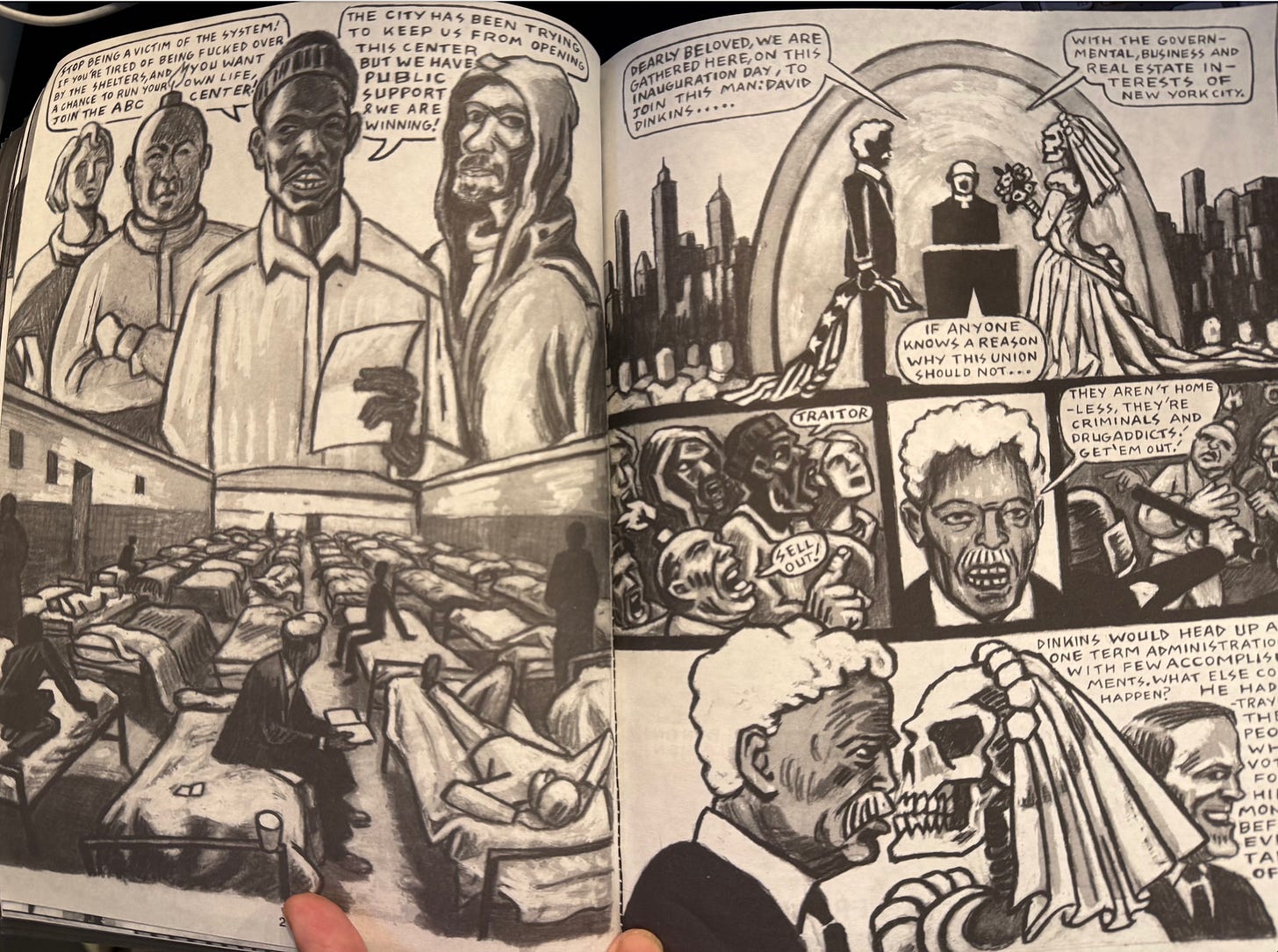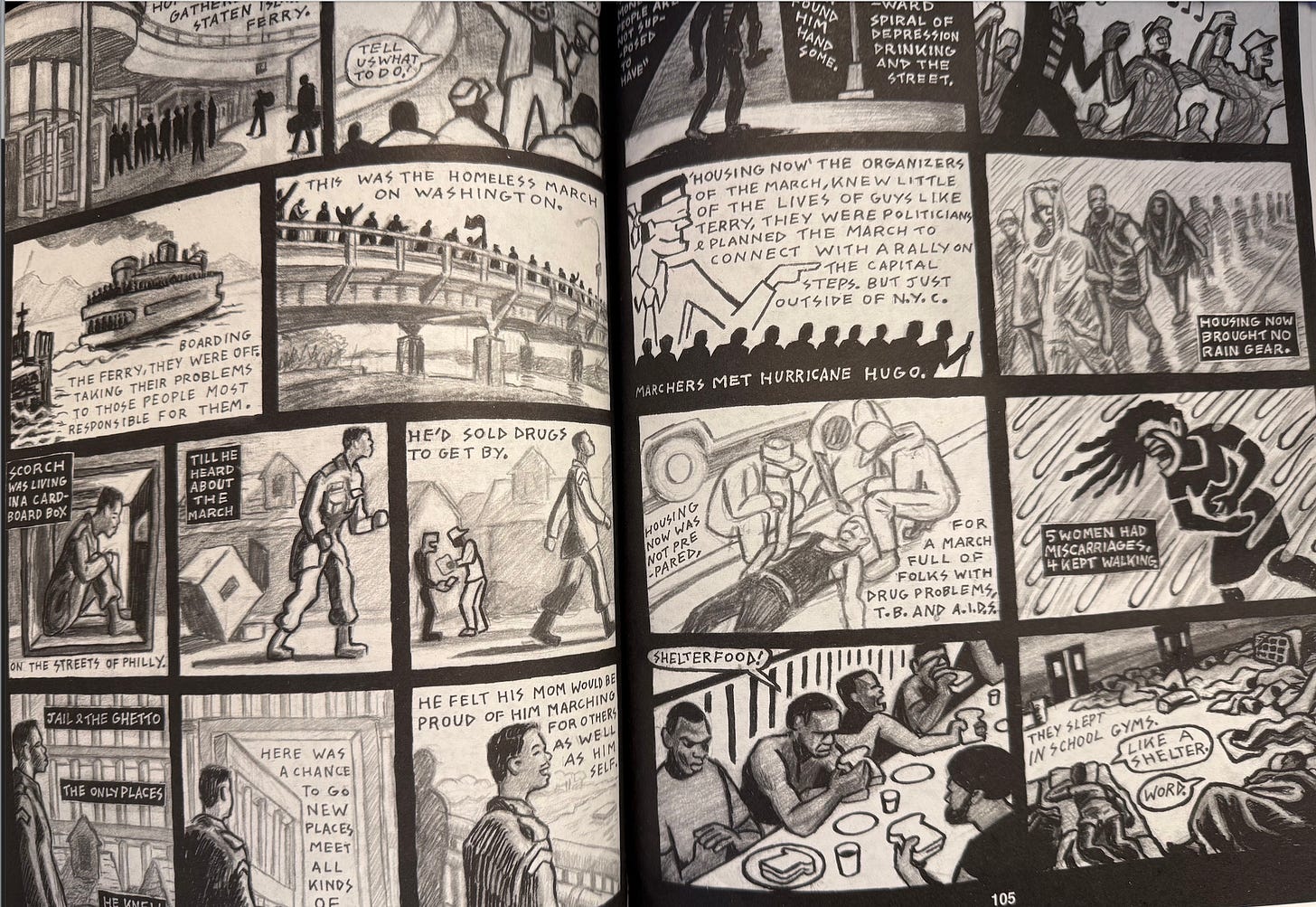No Return to the Asylum!
Facing the Shadow and Refusing the Disappearance of the Mad
In a new executive order, Donald Trump has called for the mass civil commitment of unhoused and mentally ill people—resurrecting the darkest chapters of psychiatric incarceration under the guise of public safety.
We need a radical expansion of housing, care, mutual aid, and dignity—not a return to asylums and prisons in disguise.
If this sounds extreme, that’s because it is—and it’s happening. This should be a wake-up call for anyone who cares about freedom, about human dignity, about the future we’re allowing to take shape.
Read IDHA’s take on this situation:
And we’ve been here before. In the 1980s, when New York City had abandoned entire neighborhoods to austerity and decay, the squatter community—poor folks, punks, anarchists, artists, radicals, people pushed to the edge—took over empty buildings and made homes, clinics, gardens, and collectives. It wasn’t perfect, but it was powerful. Coalitions were formed across race and class lines, not because it was easy, but because survival demanded it—and so did love. People stepped up. They showed up for each other. And they proved that the people deemed ungovernable could govern themselves with creativity, courage, and care. And so, in response, the city, real estate developers, and police worked together to crush the movement—evicting squats, criminalizing autonomy, and erasing the memory of what had been possible. We’re going to need that spirit again now. Because this moment isn’t just about policy—it’s about who gets to belong, who gets to break down, who gets to be human in public.
What Trump is proposing isn’t new—it’s a recycled blueprint of eugenics-era policies, the psychiatric warehousing of poor and mad people, and broken-windows policing on steroids. It targets the most marginalized—unhoused people, people who use drugs, people in mental health crisis—and justifies locking them away under the pretense of compassion.
Civil commitment under these terms is incarceration by another name. This is not treatment. It’s control. It’s about making poor and mad people invisible so the rest of society doesn’t have to feel its own discomfort—so people can walk down the street without being reminded of grief, fragility, or the limits of control. We project our fear onto those living what we’re afraid to imagine: being unwell, being unhoused, being unruly. And when we criminalize survival—loitering, drug use, homelessness—we create the justification to disappear people wholesale. We’ve seen this before. We know how it ends.
Let’s be absolutely clear: rounding people up and locking them away en masse is not public health policy—it’s fascism. And history will not look kindly on those who stood by while it was rolled out in the name of “humane treatment.”
And underneath all of this is a collective shadow that no one wants to face—the deep fear and loathing of madness, of need, of grief, of difference. This society projects onto others everything it refuses to metabolize: vulnerability, rage, collapse, vision. That shadow doesn’t just live in politicians—it lives in all of us. If we don’t confront it, we will keep disappearing the very people who are holding the emotional and spiritual contradictions of this collapsing world.
Because what they call disorder may be grief. What they label dangerous may, in fact, be sacred. And what they want to disappear may be exactly what this world needs to survive: the wild, ungovernable, truth-telling force of the mad. These aren’t just personal struggles—they are social messages, prophetic signals, survival strategies in a collapsing world. The current system cannot hold the gifts we carry. But a different kind of society could—and we need to build it. Not just with compassion, but with resources, infrastructure, and the courage to change what care even means.
We’re going to have to resist—fiercely, creatively, with our whole hearts. Not just in courtrooms or comment sections, but in living rooms and encampments, on sidewalks and subways, in kitchens and healing circles and locked psych units. We’ll need art that refuses erasure, direct action that disrupts displacement, mutual aid that breaks isolation. We’ll need new languages and old songs, quiet solidarity and loud refusal. We’ll need to make places they can’t reach—places where the mad are not feared, where grief is not criminalized, where survival is not contingent on compliance.
This will take love. And it will take anger. Not the kind that burns us out, but the kind that keeps the fire alive in the cold. The kind of anger that knows what we’ve lost, and still dares to imagine what we could build together. Don’t sit this one out. This is a wake-up call. What’s coming will shape the future of care, of freedom, of who gets to be human. We need all of us in this.
They’re going to push us so hard we’ll have no choice but to remake the world. Not out of hope alone, but because survival will demand it.
This is not just resistance—it’s return.
To each other.
To our dangerous gifts and sacred life.
To a future we’re not supposed to survive, but just might remake.
Art by Seth Tobocman from War in the Neighborhood
You Are Not Alone graphic by Kevin Capliki channeling CRASS
Find me in my public/private practice where, if you’re lucky, I’ll tell you stories about being a young teenager raised on the streets by punks and anarchists:









Sascha what a piece! Right on time and right on the nose. You left nothing for me to say but thank you for writing it. And as I look at my own copy of War in the Neighborhood I am reminded that there have always been people saying "screw this" and radically taking care of one another. We need more of it and we need it now!